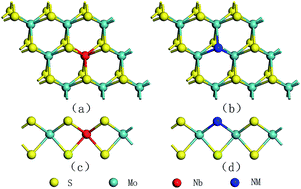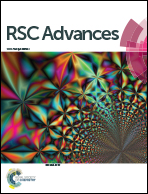Band structure engineering of monolayer MoS2: a charge compensated codoping strategy
Abstract
The monolayer MoS2, possessing an advantage over graphene in that it exhibits a band gap whose magnitude is appropriate for solar applications, has attracted increasing attention because of its possible use as a photocatalyst. Herein, we propose a codoping strategy to tune the band structure of monolayer MoS2 aimed at enhancing its photocatalytic activity using first-principles calculation. The monodoping (halogen element, Nd) introduces impurity states in the gap, thus decreasing the photocatalytic activity of MoS2. Interestingly, the NbMoFS codoping reduces the energy cost of doping as a consequence of the charge compensation between the niobium (p-dopant) and the fluorine (n-dopant) impurities, which eliminates the isolated levels (induced by monodopant) in the band gap. Most importantly, the NbMoFS codoped MoS2 has more active sites for photocatalysis. These results show the proposed NbMoFS codoped monolayer MoS2 is a promising photocatalyst or photosensitizer for visible light in the heterogeneous semiconductor systems.


 Please wait while we load your content...
Please wait while we load your content...